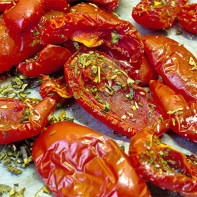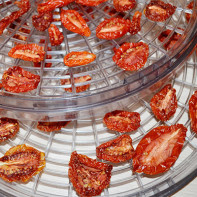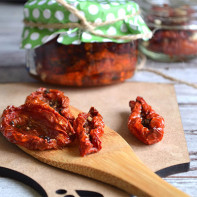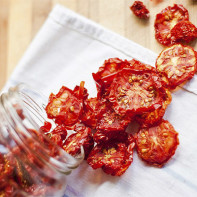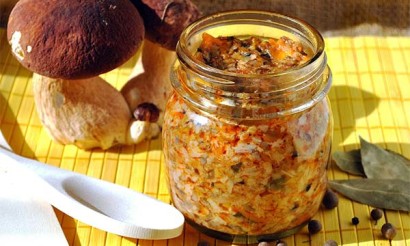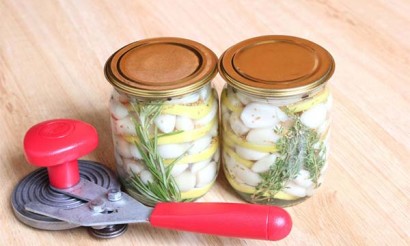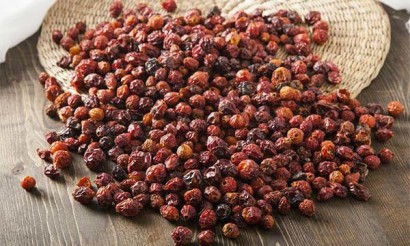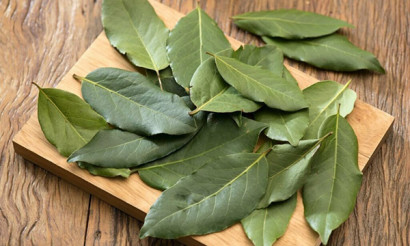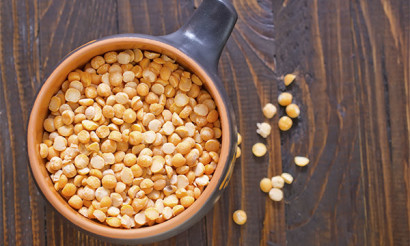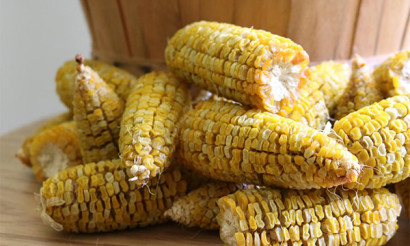How to Dry Tomatoes at Home
Every housewife spends a huge number of hours near the stove in the fall, canning for the winter dozens and even hundreds of cans of garden gifts, including tomatoes. However, you can diversify their winter menu, not only preserves of pickled or pickled tomatoes. These vegetables lend themselves well to drying. They can be put in soup or pie, cooked with them in meat or fish dishes, as well as stewed or even served on their own. It does not take much work to dry tomatoes, and the result is a joy all winter long.
- What tomatoes are suitable for drying
- How to prepare the fruits for drying
- How to properly dry tomatoes
- In the oven
- With an electric dryer
- Air grill
- In the microwave
- In the sun
- How to Read Dried Tomatoes
- How to store dried tomatoes properly
- What are the benefits of dried tomatoes
- What can be made with dried tomatoes
- Snack with tomatoes
- Pesto
- Dinner Salad
- Warm salad with chicken and mushrooms
- Hot Sandwiches
- Bruschetta with Dried Tomatoes
- Pie with tomatoes
- Pumpkin soup with sun-dried tomatoes
- Indian soup
- Seafood soup
- Pasta with chicken fillet
- Paste with beans
- Rice with sun-dried tomatoes and chicken
Dried tomatoes have almost two-century history. They were first dried in Italy in the 19th century, and then the Italian recipe spread around the world.
What tomatoes are suitable for drying
To prevent tomatoes from losing their shape and turning into something unsightly during the drying process, you should take specimens with a firm skin and a small size - no more than 7 cm in diameter.
Plum-shaped tomatoes, characterized by a dense flesh with a delicate taste and tough skin, are the best for this purpose. The "cream" tomatoes have a low water content, which means that when they are cut few juices are released, the seeds inside are firmly held and do not fall out, so the tomatoes do not deform during drying.
The color of the vegetables does not matter - they can be orange, red, pink, and even purple. For example, the name of the variety Sunny Bunny speaks for itself. These tomatoes are yellow, the Pink Raisin is pink, the Orange Cream is orange, and the Purple Dragon is purple, of course. Of the traditional red tomatoes, Large Cream, Maryushka, Hope, De Barao, Adelina, and others will do.
Tomatoes grown outdoors will taste better in their finished form than greenhouse tomatoes because they are more flavorful and fleshy.
Unripe fruits are not suitable for drying, damaged or wrinkled is also better to put aside.
How to prepare fruits for drying
When the vegetables suitable for drying are selected, they should be well washed and wiped. If the tomatoes are chosen correctly, strong, they will not suffer from the towel.
The next stage of preparation is slicing. You should cut in circles no thinner than 5 mm - along or across the tomato, it does not matter. The place where the stalk is attached, cut out with a sharp knife and discard.
To make the finished product more tasty and flavorful, you can sprinkle the circles with dried aromatic herbs and even rub them a little in the pulp. Here the choice is rich, there is something to choose according to your taste: the ideal partner of tomatoes, of course, basil, but you can use thyme, oregano, rosemary, coriander, celery and other spices. For the herbs to give off the most flavor, grind them right before you sprinkle them on the circles of vegetables.
How to properly dry tomatoes
Whatever method of drying tomatoes the hostess has chosen - with the use of the oven, electric devices or just in the fresh air, it is important to spread them on trays or trays that will not succumb to the acids emitted by these vegetables. For this reason, aluminum trays should never be used.
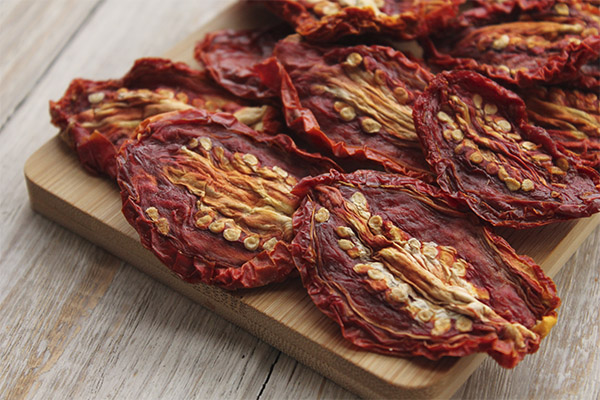
To prevent tomatoes from sticking, it is better to grease the trays with vegetable oil, as well as to use baking paper.
In the oven
- Before you send the tomatoes in the oven, you can not only sprinkle them with dried herbs, ground pepper, sea salt, but also crumble on circles of pressed garlic, as well as cover them with vegetable oil. Such tomatoes will definitely not turn out to be bland and tasteless. You will not need much garlic per kilo of tomatoes - only 2-3 cloves.
- Line a baking tray with parchment paper, folded in half and not too thin. Pour vegetable oil in a bowl, dip each circle in it and place it on the paper in a single layer, so that they do not touch each other. Sprinkle the tomatoes on top with salt, herbs and crushed garlic.
- Turn the oven on, setting the temperature to 100 to 130 degrees Celsius, leave the door ajar so that the moisture evaporating from the tomatoes does not stay inside. If the oven has a built-in convection function, the door can be closed.
- After 50-60 minutes, check the condition of the tomatoes. If they begin to darken and slightly brown, open the door a little more or lower the temperature. You can turn each tomato ring upside down for more even drying. After another couple of hours, they should reduce in size by about half.
- Then keep them in the oven for another hour - and you can turn off the fire.
- This time is relative - the process can take up to 8 hours, because the final result depends on the type of oven itself, how intensively it heats up. Thus, in the electric oven vegetables are dried faster than in a gas oven.
Cooled dried tomatoes can be put away for storage. If you have a desire - you can put them in a jar, pouring them with spices, and fill with vegetable oil.
In an electric dryer
Since the dryer is designed specifically for drying fruits and vegetables, it does not need to adapt anything to make tomatoes.
For the electric dryer, tomatoes need to be prepared the same way as for the oven: dip them in oil, place them on the appliance trays and sprinkle them with spices. On the electric dryer set the timer for 2 hours, and the temperature - 80 degrees. When the program finishes, you need to swap the dryer trays: put the upper ones down, the lower ones up, you can even turn each piece of tomato. And run the dryer again - now for 5 hours, but make the temperature 10 degrees lower. On a hotter air to dry vegetables is undesirable: dried outside, inside they will remain raw and will not last long, will spoil.
In an aerogrill
It is not difficult to dry tomatoes in the air grill. You can prepare dried tomatoes in a small amount of time - literally for dinner. You can even get fancy and make not just sun-dried tomatoes, but spicy ones.
To do this you just mix a teaspoon each of dried rosemary and basil, add a pinch of coarse sea salt, squeeze a couple of cloves of garlic and grind white pepper (to your liking) in a cup.
Wash a kilogram of ripe but firm non-bulky tomatoes and dry them with a towel. Cut them not in rings, but in quarters. Carefully with a teaspoon pick out the seeds without touching the flesh, and drain all the liquid that will be released. Arrange the tomatoes skin-side down on the grids of the air grill, sprinkle with a mixture of salt and spices. Place the grates inside the device and turn it on, setting the fan at high speed and the temperature at 100-110 degrees. Dry for about 3.5-4 hours, from time to time, carefully inspecting the product so that it does not dry out.
In order for the moisture to freely come out, the lid should be left barely covered, putting under it a metal or silicone spatula for flipping fish and cutlets (maybe you will find something more suitable for the role of a limiter in the house).
When the tomatoes are ready and have cooled, put them in a jar with layers of squeezed garlic, pour olive oil over them, and put them in the refrigerator under a closed lid.
In the microwave
You can also dry tomatoes in the microwave, but you should keep in mind that the water contained in them will splash on the walls of the device along with the pulp of the vegetable. To avoid this, you need to set the mode on the device, limit the power to no more than 800 watts.
And it is better to take tomatoes in smaller pieces and cut them not in rings, but in halves, then sprinkle them with pepper seasoning, honeysuneli, crushed garlic and generously drizzle with olive oil. Arrange on a heatproof flat plate and put it in the microwave oven.
Set the timer for 15 minutes, then check to see if the vegetables are dry. If they are not dry, turn them over and turn the timer on for another 5-7 minutes, after which check the process once again. Usually this time is enough.
When the tomatoes have cooled, you can put them in jars and spread them out on shelves.
In the sun
The only obstacle that can get in the way of the hostess, who decided to dry tomatoes in the sun, is the weather. If in the southern regions there will be no problems with this, in the middle belt in recent years it is becoming increasingly rare to get a really hot sunny week. There is no way to do less, because in the fresh air tomatoes will dry well in at least 5-6 days.
Drying outdoors is easy and troublesome at the same time. You will have to take the tomatoes out in the morning and bring them back inside in the evening, so that neither sudden night rain nor morning dew will spoil the product and ruin all the efforts.
So, cut the tomatoes into rings and place them in a single layer on baking trays or trays lined with baking paper or cotton cloth. Cover the vegetables with gauze to protect them from flies. Arrange the trays in well sunlit places.
Start drying fresh, freshly sliced tomatoes in the morning, so that the day has had time to evaporate most of the moisture and the vegetables dried surface. On the first day it is important to have time to turn the rings at least once, so that the second side dries out. Soaked paper from the trays should be removed and replaced with new paper. Subsequently, turn the tomatoes at least daily.
If the tomatoes are still dry and the day is overcast, it is better not to risk taking them outdoors. One day you can leave them at home and put trays with vegetable semi-finished products on windowsills or tables - but necessarily in a warm, well-ventilated room.
How to tell if the product is ready
Well-conditioned, properly dried tomatoes take on a rich, dense color, much darker than that of fresh tomatoes. The flesh should feel firm but pliable. If you put pressure on it, it crumples - that's why dried tomatoes are sometimes also called dried tomatoes. They are easy and pleasant to chew. The seeds also harden, becoming more yellow.
It is important not to over-dry tomatoes, otherwise they will become completely hard, or on the contrary, they can crumble. The smell of over-dried tomatoes is not very pleasant - it smells burnt, and it tastes bitter.
How to store dried tomatoes properly
Under the right conditions, dried tomatoes can last a whole year, until the next harvest, without losing their consumer properties. And the right conditions are a cool temperature in the room where the vegetable is stored, not below 10 and not above 22 degrees, and low humidity. At the same time, tomatoes must be protected from light, especially direct sunlight. It is best if it is a pantry or closet. If the cellar or basement is dry - this is generally the ideal place.
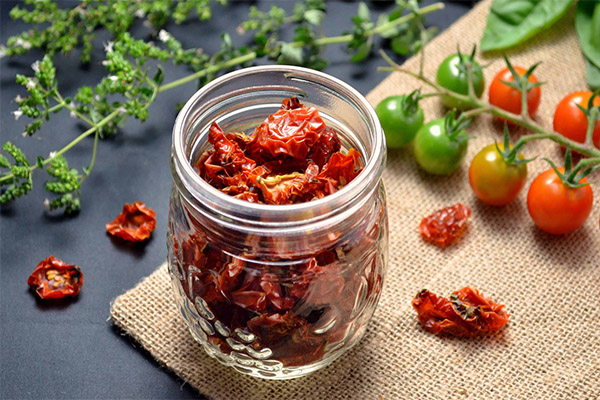
For storage, tomatoes should be put in dry glass jars with tightly closed (but not plastic) lids. Some housewives use plastic lids or even store dry tomatoes in plastic containers at all, but this is not the best option, because in plastic the product "does not breathe" and can be covered with mold.
Pouring dried tomatoes into canvas bags or paper bags is certainly acceptable, but they will not retain their full flavor.
Of course, you can also freeze dried tomatoes, as some people do. In the freezer they will last even longer. But, first, you have to take up space in the freezer, and secondly, defrosting the tomatoes will lose their shape, become less attractive and will be suitable only for heat treatment.
If there are not very many tomatoes, and the plan is to use them mainly for salads and sandwiches, that is, not boiling or stewing, you can prepare dried tomatoes under sunflower or olive oil: you get a kind of marinade of the product.
Dried tomatoes should be placed in dry jars, pour crushed garlic, your favorite dried aromatic herbs and pour the oil. Then cover the jars tightly and put them on the refrigerator shelf.
What are the benefits of dried tomatoes
Some people may not like the appearance of dried tomatoes. But despite the appearance, they remain tasty and retain the full range of useful substances contained in fresh vegetables. Moreover, per unit weight, the amount of such substances increases, as excess water is evaporated. As a result, the product becomes more concentrated.
- First of all, it is a rich vitamin complex to keep the human body functioning and resist negative external influences. For example, vitamin A contained in tomatoes helps maintain vision and strengthens the immune system.
- An extensive group of vitamin B improves the condition of the nails and hair, stimulates the healing of skin damage after minor injuries and various acne breakouts, helps vitamin A maintain normal vision, controls the recovery of strength after hard physical work, participates in the organization of digestion, normalizes the circulatory system and gives strength to recover from difficult long-term diseases. And folic acid (or vitamin B9) is essential for pregnant women, especially in the early stages, because it contributes to the proper formation of internal organs and systems of the baby.
- In conjunction with B vitamins works and vitamin PP, which also regulates metabolic processes and affects the liver and digestion.
- A lot of vitamin C, or ascorbic acid, in tomatoes. It is widely known as a substance that helps to recover from colds and acute respiratory infections, strengthen the immune system. In addition, ascorbic acid is a good antioxidant (a substance that slows down oxidation processes in the body and inhibits aging).
- Tomatoes contain another important vitamin - K. In its deficiency the blood clotting process is disturbed, a person gets tired quickly, there are problems with digestion.
- Thanks to television commercials, magnesium, which is a component of tomatoes, everyone knows as a means to relieve stress and tidy up the nervous system. In addition, it can get rid of headaches and normalize sleep. But few people know that magnesium also helps the intestines function properly.
- The high content of potassium in dried tomatoes allows them to actively improve the work of the heart and blood vessels, as well as preventing edema.
- Iodine is also on the list of useful substances contained in tomatoes. Its main function is to be responsible for the condition of the thyroid gland and stabilize the work of the hormonal system.
- And such a substance as manganese is not only useful in itself. It supports the immune system, participates in the formation of skeletal tissues and improves digestion. Manganese is also important because without it the assimilation of all the vitamins listed above would be impossible, as well as the renewal of body cells, tissue healing and brain function.
- Fibre is a significant part of tomatoes. These dietary fibers, like a brush, clean out from the intestines everything that is not needed - undigested food debris, harmful substances, carcinogens and toxins, thereby ensuring its better functioning. In addition, fiber has an effect on cholesterol content, reducing it, and thus cleanses the blood vessels and prolongs their life.
Thus, the consumption of tomatoes, including dried tomatoes, helps to get rid of avitaminosis, normalize the intestinal tract and get rid of constipation. It is scientifically proven that tomatoes are able to fight cholesterol deposits on the walls of blood vessels and their clogging.
Thanks to their low calorie content, tomatoes are recommended for people struggling with obesity. Not only can they diversify your rather limited dietary menu, but thanks to their antidepressant qualities they will help improve your mood and get rid of annoying thoughts about losing weight.
For elderly people, tomatoes are useful because they improve memory, because they establish the correct brain activity. Besides, thanks to their antioxidant capacity, tomatoes fight aging and reduce the risk of malignant tumors.
However, dried tomatoes are not good for all people. They are contraindicated for those diagnosed with serious chronic stomach diseases - such as ulcers. It is not recommended to eat them in case of exacerbation of liver and pancreatic diseases.
In addition, like any product, dried tomatoes should be consumed in moderation. If you overeat them, over the years you can get kidney stones and salts in the joints.
What can be made of dried tomatoes
In an inventive hostess, dried tomatoes will go in appetizers, in first and second courses, with them make sauces and even prepare baked goods. And to prepare tomatoes for culinary use, just before use they should be soaked for 15-20 minutes in water at room temperature. The vegetables will get rid of excess salt, and the taste will become a little softer and more delicate.
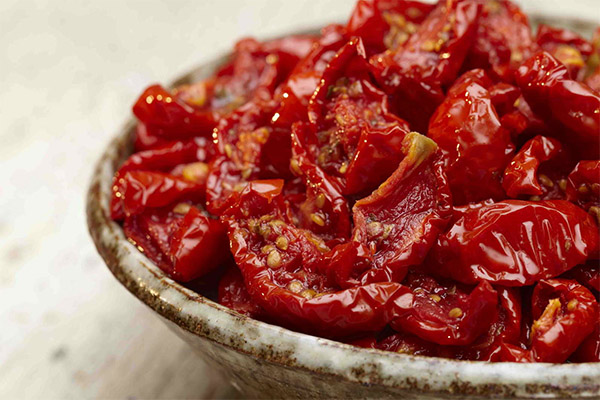
For a faster "reanimation" of dried tomatoes, you can lower them in hot water with vinegar (a large spoonful of bite per 1 liter of water). Two minutes is enough for the vegetables to soften to the desired state.
If the recipe suggests that the dried tomatoes will be cut, it is not necessary to soak them.
Tomato appetizer.
Dried tomatoes are well worthy to be an appetizer in their own right.
- To decorate an everyday (or even festive) menu, you need 300-400 grams of dried product in a glass half-liter jar, interspersing layers of tomatoes with crushed garlic and ground red pepper. This volume will take 4 medium garlic cloves.
- Sprinkle dried dill or parsley on top of the tomatoes.
- Pour a glass of vegetable oil (250 ml) at room temperature into the jar, shake a little so it sinks to the bottom. Tightly screw the lid on the jar and put it in the fridge for 3 weeks.
Serve with a little excess oil removed with a paper towel. The tomatoes become fragrant, a little tangy and look very interesting.
Pesto
- In a blender, chop 150g of dried tomatoes, 50g of walnuts, a clove of garlic and 3 to 4 leaves of basil, add a pinch of ground paprika.
- Grate 50g of hard cheese on a fine grater and put in the resulting mass, slowly pour in the same olive oil (5 tablespoons).
This sauce can be served with meat or poultry as well as spaghetti or fish.
Salad for dinner
- Dice 40g of mozzarella cheese, 4 sun-dried tomatoes in thin strips, 10 pitted green olives in quarters and half a red onion in thin half rings.
- Tear the Peking cabbage leaves and arrange them nicely on a flat plate. Next, arrange all the ingredients in layers: first the onions, then the tomatoes, on top of them the olives and top with the cheese cubes.
- Pour the salad with olive oil dressing dressed with vinegar, ground pepper and salt to taste.
You can even add a little table mustard to the dressing.
Warm salad with chicken and mushrooms
- Cut the chicken fillet (400g) in slices and fry it on a hot pan so that it gets browned.
- Cut the bell peppers in strips and roast them in oil on a pan. Also fry 200g of mushrooms sliced in slices.
- Tear the leaves of Peking cabbage (or Chinese lettuce, as it is also called) into small pieces and lay them on a plate.
- Place the roasted products in layers in the following order: peppers, then - mushrooms, then - chicken, the last layer - dried tomatoes. Sprinkle the sesame seeds on top.
No need to dress such a salad, the oil, in which the ingredients were fried, will be enough. For a little sourness you can sprinkle lemon juice.
Hot Sandwiches
- A couple of handfuls of dried tomatoes, seasoned briefly in water, a little splash of olive oil.
- Add a few crushed garlic cloves, two finely chopped basil leaves and 50g grated melted hard cheese.
- Put the mixture on the loaf slices and put it in the microwave for 5 minutes.
When the cheese is melted, you can take the sandwiches out and taste.
Bruschetta with dried tomatoes
- Dried tomatoes in advance (a day) marinade: put them in a half-liter jar, pouring layers of vegetables dried herbs - basil, dill, parsley, add peppercorns and a few cloves of garlic. Pour warm olive oil heated in the microwave and put it in the fridge.
- After 24 hours, you can start making bruschetta. Cut the baguette crosswise slices no thicker than 2 cm and dry them in an oven or toaster for two minutes.
- While they are drying, place half a cup of pickled dried tomatoes in a bowl. Chop 3 fresh tomatoes - so that its slices are the same size as the pieces of dried tomatoes, and add to the dried ones.
- Squeeze 2 cloves of garlic, grate mozzarella cheese (about 200g), chop 3-4 sprigs of basil, a couple teaspoons of balsamic vinegar and pour 2-3 tablespoons of olive oil over the mixture. Salt and sprinkle with freshly ground pepper mixture from the miller. Stir to combine.
- Spread the resulting mass on the slices of baguette and send it to the oven for 5-6 minutes.
You can serve bruschetta hot or warm. However, and in a cold form it is also good.
Tomato pie
- Defrost a box of puff pastry. Brush its plates with vegetable oil (you can use the one you pickled the dried tomatoes in), sprinkle with dried basil.
- Cut 7-8 pickled tomatoes into slices (you can pickle them the same way as in the previous recipe) and spread them on the surface of the dough. Slice 200g of any hard cheese and cover the entire surface of the pastry. The next layer will consist of rings of fresh tomato (you will need 2-3 hard tomatoes of medium size).
- Drizzle the surface with olive oil, pepper and salt to taste and put it in the oven for 25-30 minutes, where you set the temperature to 200 degrees.
Before serving, place the pie on a platter over the lettuce leaves and top with the capers.
Pumpkin soup with sun-dried tomatoes
- Slice a medium sized onion and place it in a skillet to fry in a mixture of butter and vegetable oil. While the onions are frying until golden, dice 300g of pumpkin and add them to the onions. Taste and season with rosemary and nutmeg, then add 150 ml of vegetable bouillon, then stew until the pumpkin is tender.
- Gently sprinkle 2 tablespoons of flour over the vegetables, stir in the pan and, after a minute, pour in 150 ml of cream. If the soup is for someone on a diet and counting calories, you can replace the cream with milk. Simmer for 2 minutes, then add 250 ml of vegetable broth, wait until it boils and turn off the heat.
- Use a blender to puree the pumpkin and cover. After 5 minutes, when the soup has infused, you can pour it into plates, adding in each small handful of chopped dried tomatoes and a tablespoon of grated any hard cheese.
- As a decoration, put 5-7 small croutons rubbed with garlic on the plates.
Indian soup
This soup is unusual for the average eater, but why not try what the natives of the Indian mountains are eating? All the more so because the set of products it is quite suitable for eating during Orthodox Lent.
- Do not chop the dried tomatoes (200 g), but put them whole in a pan with vegetable oil and raisins (100 g). Stew them under a lid (you can add a little water) for 10 minutes, add oregano and hot red pepper.
- Then add 1 l of water and 100g of lentils. Cook for about 40 minutes on low heat.
- Season with salt and taste how well the lentils have cooked. If necessary, hold for a couple of minutes more, remove from the stove and cover tightly for another 10 minutes.
Seafood soup
- Peel 300g of calamari and cut them into rings. Melt half a tablespoon of butter in a deep pan, put there the chopped stalk of shallots and a small garlic clove. Sweat for a couple of minutes, so that the shallot becomes transparent and the garlic does not burn.
- Pour three-quarters of a cup of dry white wine into the pan, add a big spoonful of freshly squeezed lemon juice and put the calamari and 300g of mussel meat. Add 1 liter of fish broth and a couple of bay leaves.
- When the contents of the pan is boiling, turn down the heat and cook under a closed lid for about 5 minutes, then remove the calamari and mussels and cut into large pieces. Leave a few rings of squid for decoration. Strain the broth.
- In another saucepan over low heat, fry another chopped shallot and 2 cloves of garlic in olive oil. Sprinkle with a tablespoon of flour and stir, then slowly pour in the broth, stirring quickly so that no lumps of flour form.
- Add 100 g of dried tomatoes and bring to a boil, then chop the soup with an immersion blender and put the chopped mussels and calamari. The soup should continue to stand on the heat the whole time. Carefully, in a thin stream, pour a glass of milk into it, sprinkle it with black pepper, bring it to the boil and turn off.
Serve this dish with a squid ring and garnish with fresh herbs.
Pasta with chicken fillet
- Dice half a kilo of chicken breast fillet. Squeeze 4 medium cloves of garlic on the chicken and mix. Pan-fry the fillet in a red-hot pan until golden brown.
- At the same time, put two sweet peppers cut into strips in the oven for baking.
- Use a blender to turn half a kilo of dried tomatoes into a paste. Put to the chicken, the paste of dry tomatoes, add a couple of pinches of dried basil and a glass of cream. Stew the contents of the pan for another 20-25 minutes.
- In the meantime, boil the pepper pasta. When they are ready, place the pasta on each plate, top with the chicken pieces and pour the cream sauce in which it was stewed.
Bean Pate
- Take a glass of boiled white beans, you can buy canned at the store. Chop a medium sized pickle with a blender along with a dozen dried tomatoes.
- Add 2 tablespoons of lemon juice, a small bunch of parsley, a couple of garlic cloves and half a teaspoon each of dried spices - oregano, basil, chili pepper - to the bowl of the cucumber-tomato mixture. Run the blender again.
- Next, add 5 tablespoons of olive oil, beans and run the blender again. When the mixture is pureed, taste and, if necessary, add salt.
Rice with sun-dried tomatoes and chicken.
- In a deep frying pan, brown 4 chicken shanks, having previously skinned them.
- Dice a small onion, pinch a pinch of Zira and press 2 cloves of garlic and fry some more.
- Wash 200 grams of rice, put it into a pan and fry with chicken just a minute, stirring constantly. It is important that each grain is covered with oil. After that, add water to cover the contents of the pan on a finger and a half, salt and leave to simmer under a closed lid.
- When the water is almost all evaporated, chop and put in the pan 7-8 dried tomatoes, mix well and wait until the rice is cooked through.
When serving, you can top the dish with a salad of fresh cucumbers and tomatoes.
«Important: All information on this site is provided for informational purposes only. for informational purposes only. Before applying any recommendations, please consult with a health care professional. specialist before using any of the recommendations. Neither the editors nor the authors shall be liable for any possible harm caused by materials."


